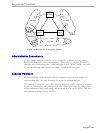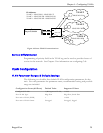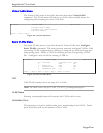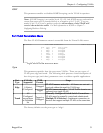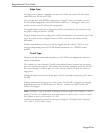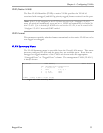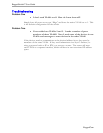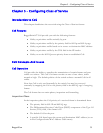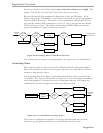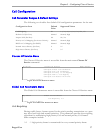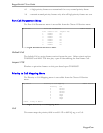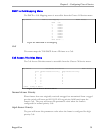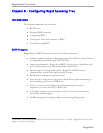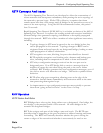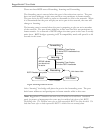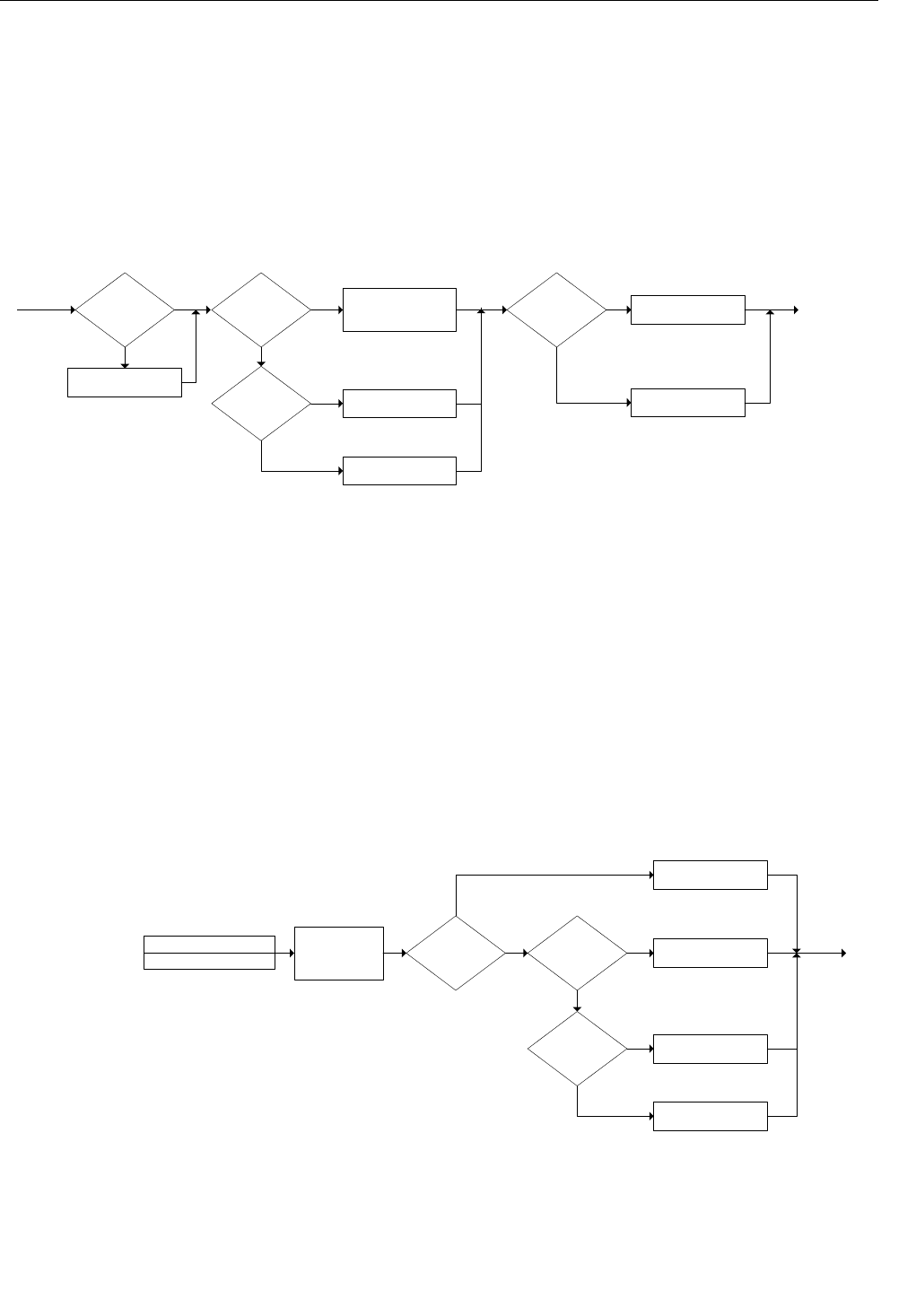
RuggedSwitch™ User Guide
Note that a frame’s CoS will be high if any of the above factors set it high. The
frame’s CoS will be low only if all of the above factors set it low.
Received frames are first examined to determine if they are IP frames. If the
frame is IP and the TOS DSCP to CoS feature is selected, the CoS is determined
from the DSCP field itself. The frame is then examined for 802.1P and 802.1Q
tags and the priority field is mapped to a CoS. If a tag is not present the default
CoS for the port is used. The source and destination MAC addresses are then
used to determine if a high CoS has been selected.
Use default CoS
For Port
Priority >
Threshold ?
Use Normal CoS
Use High CoS
Frame
tagged ?
Received
Frame
Mac CoS
High ?
Use High CoS
Leave CoS As Is
To CoS Queues
of other Ports
Use TOS
DSCP ?
Map TOS to CoS
Y
Y
Y
Y
Figure 24: Determining The CoS Of A Received Frame
After inspection, the frame is the forwarded to the egress port for transmission.
Forwarding Phase
The inspection phase results in the CoS of individual frames being determined.
When these frames are forward to the egress port they are collected into either a
normal or high priority queue.
CoS weighting selects the degree of preferential treatment that is attached high
CoS frames. The ratio of the number of high CoS to low CoS frames transmitted
can be programmed. If desired, the user can program that low CoS frames are
transmitted only after all high CoS frames have been serviced.
CoS
Weighting
Selector
High CoS Queue
Normal CoS Queue
Frame
tagged ?
High Cos?
Use Normal Tag
Use High Tag
Leave Tag As Is
Port
tagged ?
Srip Tag
Transmitted
Frame
Figure 25: Use of CoS When Forwarding Frames
If the port is configured to transmit VLAN tags and the frame was received
without a tag, the priority field value is selected from the CoS value.
RuggedCom



